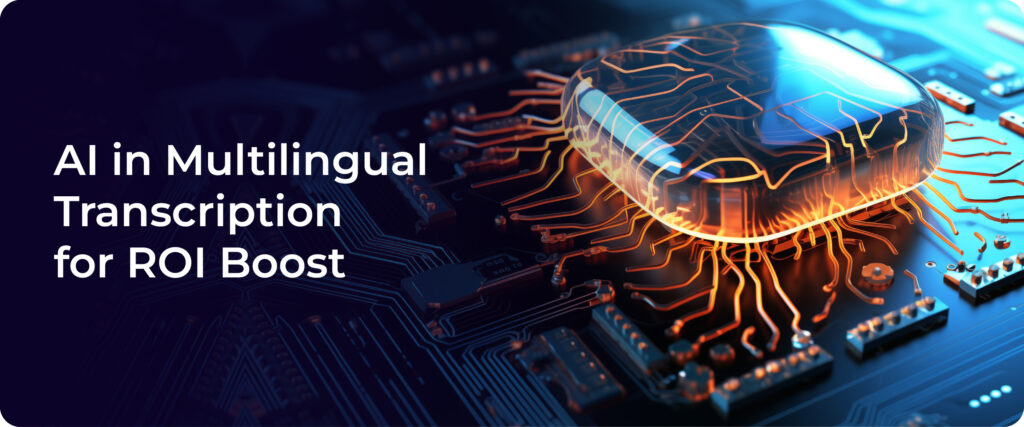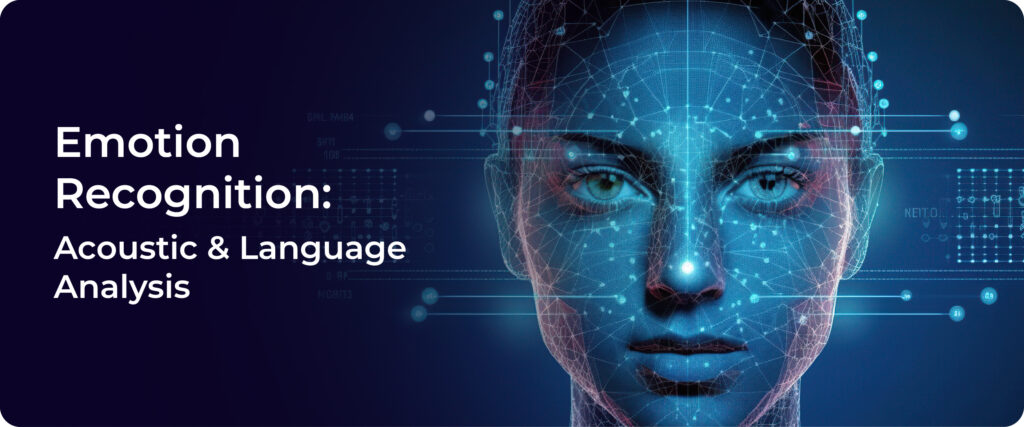Using NLP to Understand Customer Conversations
Customers are at the centre of any business’s success. With business-customer interactions becoming more prominent across various channels—calls, social media and chat—it is becoming increasingly important to find ways to maximize what the business is learning from these customer interactions. Given the scale at which most businesses are interacting with customers, relying on Artificial intelligence and automation for understanding customer interactions is becoming inevitable. It is at this juncture that Natural Language Processing(NLP) and machine learning can have a significant impact.
convozen.AI, a leading conversational intelligence tool, exemplifies the successful integration of TQA and NLP within various sectors, offering an unparalleled customer success experience. Lets look at the technical workings of these models and also on how convozen.AI utilizes these technologies to reshape customer interactions.
The Essence and Evolution of Question Answering (QA)
Ground-breaking Advancements in QA
The field of QA has evolved dramatically, driven by deep learning breakthroughs. Innovations like the SQuAD 2.0 benchmark by BERT, and subsequent models such as XLNet, RoBERTa, and ALBERT, have significantly enhanced the understanding of language nuances.
In-Depth Analysis of Variants of QA Models
- Extractive QA: Extractive Question Answering focuses on identifying and extracting specific answer segments from a given textual context. This approach is widely used in scenarios where the answer is explicitly stated in the provided material.
- Implementation: Typically implemented using BERT-like models, extractive QA involves scanning the text, understanding the query, and pinpointing the exact span within the text that answers the query.
- Applications: – Commonly used in search engines, document analysis, and customer support systems where direct answers can be culled from existing content. (Vital for analyzing customer support interactions and extracting direct answers from conversations)
Example: convozen.AI uses extractive QA to understand customer queries and extract precise answers from interaction data.
- Open Generative QA: Open Generative QA models go a step further by generating textual responses based on the context provided. Unlike extractive QA, these models can paraphrase, summarize, or even extrapolate information based on the given context.
- Techniques: These models often rely on encoder- decoder or decoder only model, such as GPT (Generative Pre-trained Transformer), which can generate coherent and contextually relevant text.
- Usage: Ideal for scenarios like chatbots and virtual assistants where the response needs to be more conversational and not restricted to the text’s exact wording.
Example: Creating conversational responses in convozen.AI’s customer interactions, offering informative and coherent dialogue.
- Closed Generative QA: In Closed Generative QA, models generate answers without relying on an external context. This variant requires a profound understanding of language and world knowledge.
- Functionality: These models, often trained on vast datasets, generate responses based on internalized knowledge and patterns.
- Scope: Useful in situations where providing a large context isn’t feasible or when the answer needs to be inferred from general knowledge.
Example: Relying on internal knowledge and language understanding, these models answer queries based on learned patterns, crucial for convozen.AI’s context-independent responses.
Implementing TQA at convozen.AI: A Detailed Look
In this section, we delve into the sophisticated integration of Technical Question Answering (TQA) at convozen.AI, highlighting the techniques employed for processing and understanding textual data on a broad level:
- Natural Language Understanding (NLU)
- Purpose: Essential for parsing and interpreting human language, enabling the AI to grasp nuanced user queries.
- Implementation: Involves syntactic and semantic analysis to understand user intent and context.
- Machine Learning (ML)
- Role: Employs neural network architectures, particularly transformer-based models.
- Function: These models excel in processing sequential data and are adept at generating responses that are coherent and contextually aligned with the conversation.
- Context Handling (CH)
- Objective: Maintains the relevance and flow of conversations, crucial for sustaining engaging dialogues.
- Mechanism: Involves tracking conversation history and applying it to current interactions for continuity.
Training Generative QA Models
Lets take a look at how convozen.AI undertakes to develop and refine its conversational AI models. This training is pivotal in ensuring that their AI systems can engage in meaningful, accurate, and contextually relevant conversations with customers.
- Data Preparation
- Process: Involves collecting and preprocessing conversational data, including cleaning, tokenization, and anonymization to ensure privacy.
- Source: Data is gathered from customer service interactions, online communication, and other relevant dialogues.
- Model Selection
- Criteria: Prioritizes transformer-based models for their superior performance in understanding context and generating text.
- Advantages: These models have shown exceptional results in various NLP tasks, making them ideal for TQA applications.
- Supervised Learning
- Approach: Involves training models using question-answer pairs, enabling them to learn the art of generating context-appropriate responses.
- Process: The model is exposed to numerous examples to learn the range and scope of possible responses.
- Fine-Tuning with Domain-Specific Data
- Purpose: Enhances the model’s accuracy and relevance to the real estate sector.
- Methodology: Involves training the model on real estate-specific queries and responses, allowing it to grasp industry-specific terminology and concepts.

Evaluating Question Answering Models: A Comprehensive Approach
In evaluating QA models, especially in specialized applications like convozen.AI’s, a multifaceted approach is essential. This includes assessing accuracy, relevance, and effectiveness using various metrics and methods:
- Automated Linguistic Assessment: Utilizing tools like BLEU, ROUGE, and METEOR for initial evaluation of linguistic quality.
- Human Evaluation: Involving expert evaluators to assess the relevance, coherence, and informativeness of responses.
- A/B Testing: Testing different model versions with real users to gauge engagement and satisfaction.
- Domain-Specific Metrics: Employing precision, recall, and F1 scores to evaluate the model’s performance in the context of real estate.
- Continuity and Context Preservation: Assessing how well the model maintains context over multiple exchanges.
- Ethical and Privacy Considerations: Ensuring the model adheres to fairness, bias, and privacy standards.
This comprehensive evaluation approach ensures that convozen.AI’s TQA system not only performs optimally in a technical sense but also aligns with user expectations and industry-specific requirements.
Real-World Applications and Challenges at convozen.AI: An In-Depth Analysis
– Enhancing Customer Interaction through TQA
convozen’s application of TQA transcends conventional customer service, leveraging AI to provide a more personalized and efficient customer experience. The technology is instrumental in various aspects:
- Efficient Inquiry Handling: The system is designed to handle complex queries about property listings and transactions, providing timely and relevant responses.
- Lead Matching and Personalization: By understanding the context and preferences expressed in conversations, the AI system matches customers with suitable properties, thus enhancing the customer journey.
- Market Insight and Trend Analysis: The AI system analyzes customer conversations to extract market trends and customer preferences, providing valuable insights for business strategy and decision-making.
– Navigating Implementation Challenges in TQA
Implementing TQA in a real-world environment like convozen.AI’s presents unique challenges:
- Context Preservation: To maintain the flow of conversation, convozen.AI utilizes advanced memory networks and attention mechanisms. This ensures that the AI system can recall previous parts of the conversation and respond appropriately.
- Ambiguity Resolution: The system employs sophisticated natural language processing techniques like word sense disambiguation and coreference resolution. This helps in clarifying ambiguities in dialogues and understanding the specific meanings of terms within the given context.
- Ethical AI Practices: convozen.AI places a strong emphasis on ethical AI practices. This includes responsible data handling and compliance with privacy laws, ensuring that customer data is processed and used ethically and responsibly.
Conclusion: Setting a New Industry Standard
convozen.AI’s integration of TQA in conversational AI not only elevates the user experience in real estate but also exemplifies the potential of AI in various industries. It merges technical mastery and practical application, and thereby stands as a testament to the transformative power of AI in enhancing customer engagement and satisfaction.
Unleash Your Contact Center’s Potential Today! 👉 Get Started with ConvoZen.AI and Elevate Customer Experience.
Schedule a Demo Now!
FAQs
- What is NLP in customer interactions?
NLP (Natural Language Processing) is a technology used to analyze and understand human language, allowing businesses to enhance customer service by better interpreting customer conversations.
- How do NLP and TQA work together?
NLP and Technical Question Answering (TQA) are combined to accurately comprehend and respond to customer queries, leveraging AI to process human language and provide relevant answers.
- What are the types of QA models?
Key QA models include Extractive QA, Open Generative QA, and Closed Generative QA, each with a unique approach to processing and responding to customer queries.
- What’s the role of Machine Learning in customer interactions?
Machine Learning, particularly using transformer-based models, processes customer interaction data to generate contextually appropriate responses, improving engagement and accuracy.
- How are TQA systems evaluated for effectiveness?
TQA systems are assessed using automated linguistic tools, human evaluations, A/B testing, and specific metrics to ensure accuracy and user experience satisfaction.
- What applications does TQA have in customer service?
TQA enhances customer service by efficiently handling inquiries, personalizing interactions, and extracting insights from customer conversations for better decision-making.
- What challenges are associated with TQA in customer service?
Challenges include maintaining conversation context, resolving ambiguities, and adhering to ethical AI practices, which are addressed using advanced NLP techniques and responsible data handling.
- Why is privacy important in AI-driven customer service tools?
Ensuring privacy in AI tools is crucial for protecting sensitive customer data, maintaining trust, and complying with data protection laws.


